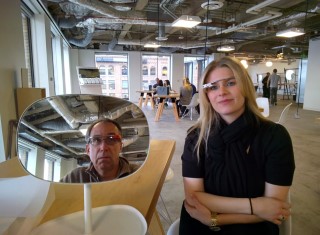Engineering site relaunches
A couple years ago I decided to start blogging and ended up not being as committed to it as I intended. Not waiting for the new year and restarting this activity.

A couple years ago I decided to start blogging and ended up not being as committed to it as I intended. Not waiting for the new year and restarting this activity.
Developing effective engineering test and factory calibration software is a crucial part of any embedded product development project. For laser beam scanning products, the need is even greater due to the required mirror and laser calibration for safe, high performance operation. Over the years our team has used both C#/.NET and LabVIEW for these applications, which need to operate in real-time and interface with test equipment, cameras, and manufacturing instrumentation. In this post I’ll share some best practices and lessons learned on development strategies for reliable factory test code.
While not currently a common development approach ZedTech has used a command line / device scripting approach based on the Forth programming language. In nearly all projects I have done for the last 25 years I have used Forth as an on device scripting language. While it is generally not a good idea to implement large projects in Forth, having a Forth interpreter/compiler as a means of interacting with the target system tends to be beneficial.
I worked on developing, mnaufacturing, and distributing vein visualization tools for over 12 years. So I have talked about the technology a lot. These product are an excellent example of projection augmented reality.
While the story sounds simple, “Having a hard time finding a vein? Use a simple vein visualization tool to help you visualize the veins in your arm.”, it is not as simple as it sounds.
The post I did on the R language made me think about the computer languages that I have liked and those that I haven’t. Thought it might be worthwhile to review what I continue to use.
In a meeting I was in yesterday someone apologized for only knowing the R language. While not a classical “great” programming language I explained that it can serve many useful and practical purposes and that there is no reason why one should be apologetic about it as it has some many useful and practical applications.
I thought it might be useful to share some of the applications that I have professionally used R for:
I have built a number of visualization products and like other augmented reality products latency is a key design characteristic.
Having built a series of vein visualization devices for AccuVein (AV300/AV400/AV500) I thought it would be interesting to share the history of NIR vein visualization. As technologists we usually think we are living in and creating things that are completely new. I thought the story was a good reminder that while we think we are creating new things that we stand on the shoulders of others and that others have gone this way before. Many of the ideas that we are working on have been around for a very long time.
I shared a bit of this story when I received the SPIE Prism award for best medical device of the year for the AccuVein AV400 in 2014. SPIE is the premier international professional society for optics and photonics, so I was very honored to receive this award.
Intramuscular (IM) is used to deliver a medication deep into the muscles. This allows the medication to be absorbed into the bloodstream quickly. IM injections are absorbed faster than Sub-Q injections because muscle tissue has a greater blood supply than the tissue just under the skin. Muscle tissue can also hold a larger volume of medication than subcutaneous tissue. Subcutaneous (Sub-Q) is used to deliver a medication into the fat layer between the skin and the muscle.